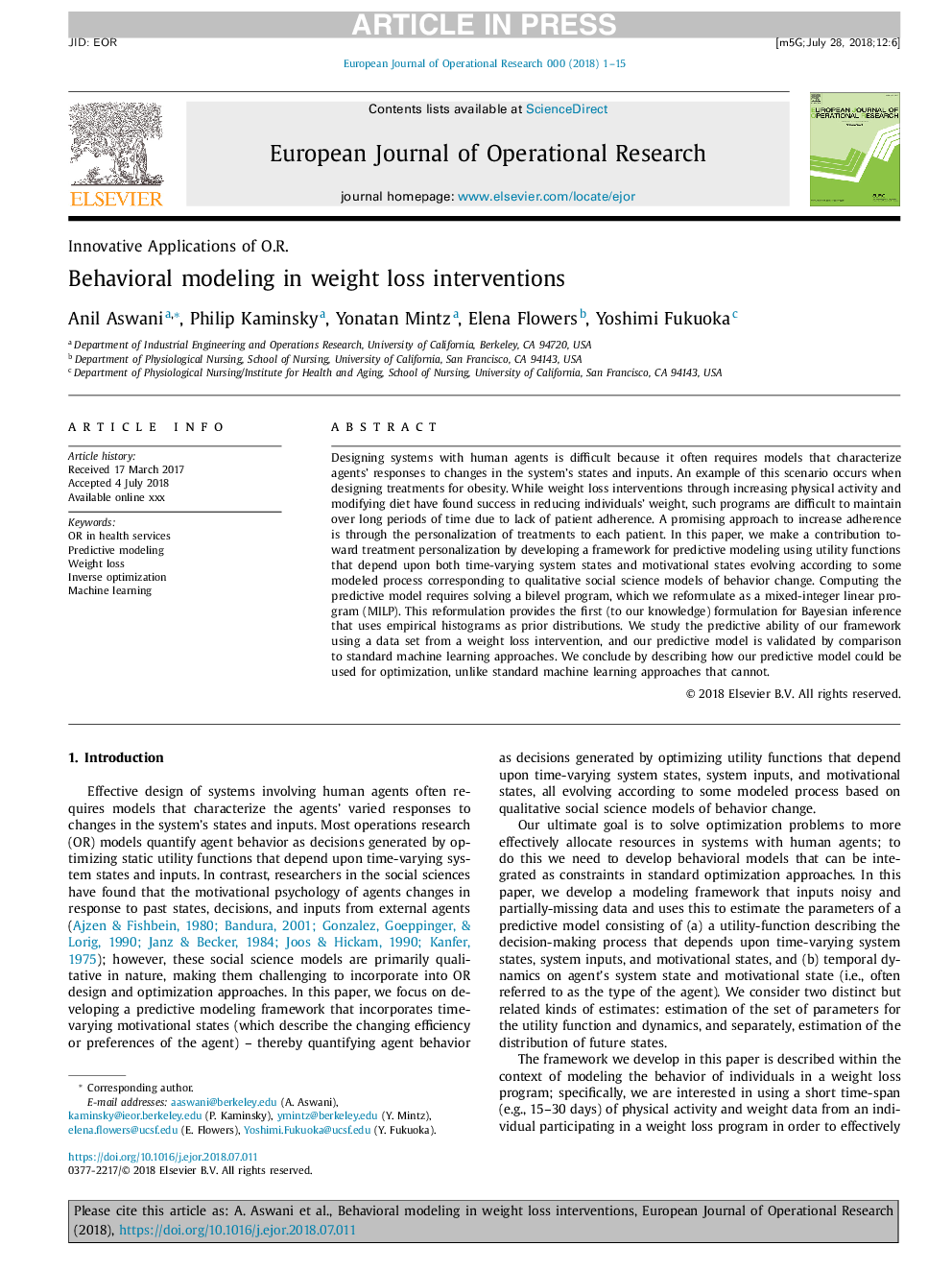| Article ID | Journal | Published Year | Pages | File Type |
|---|---|---|---|---|
| 11012420 | European Journal of Operational Research | 2019 | 15 Pages |
Abstract
Designing systems with human agents is difficult because it often requires models that characterize agents' responses to changes in the system's states and inputs. An example of this scenario occurs when designing treatments for obesity. While weight loss interventions through increasing physical activity and modifying diet have found success in reducing individuals' weight, such programs are difficult to maintain over long periods of time due to lack of patient adherence. A promising approach to increase adherence is through the personalization of treatments to each patient. In this paper, we make a contribution toward treatment personalization by developing a framework for predictive modeling using utility functions that depend upon both time-varying system states and motivational states evolving according to some modeled process corresponding to qualitative social science models of behavior change. Computing the predictive model requires solving a bilevel program, which we reformulate as a mixed-integer linear program (MILP). This reformulation provides the first (to our knowledge) formulation for Bayesian inference that uses empirical histograms as prior distributions. We study the predictive ability of our framework using a data set from a weight loss intervention, and our predictive model is validated by comparison to standard machine learning approaches. We conclude by describing how our predictive model could be used for optimization, unlike standard machine learning approaches that cannot.
Related Topics
Physical Sciences and Engineering
Computer Science
Computer Science (General)
Authors
Anil Aswani, Philip Kaminsky, Yonatan Mintz, Elena Flowers, Yoshimi Fukuoka,
